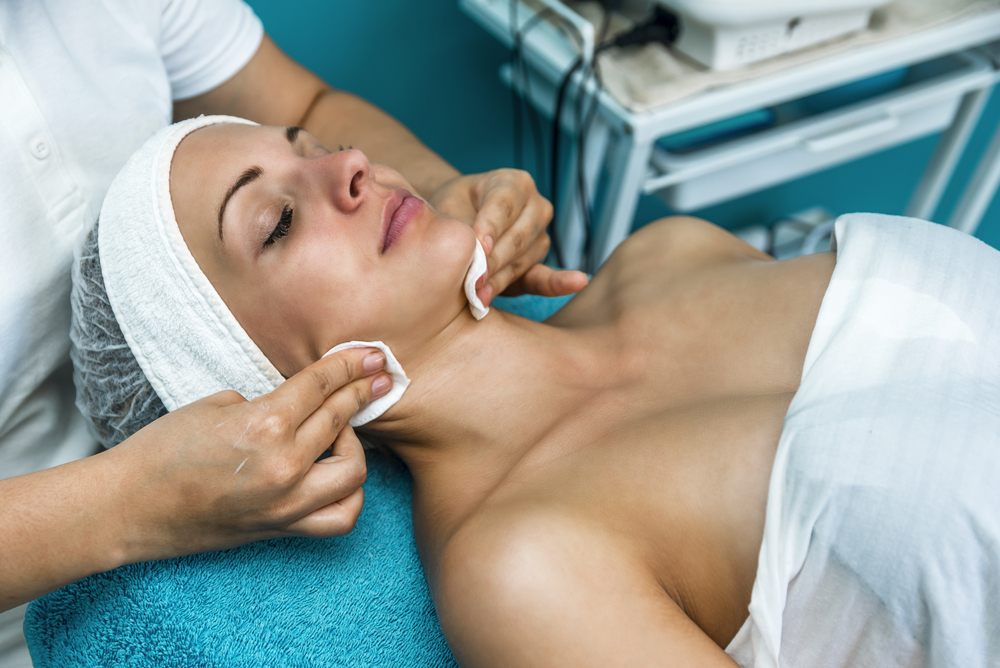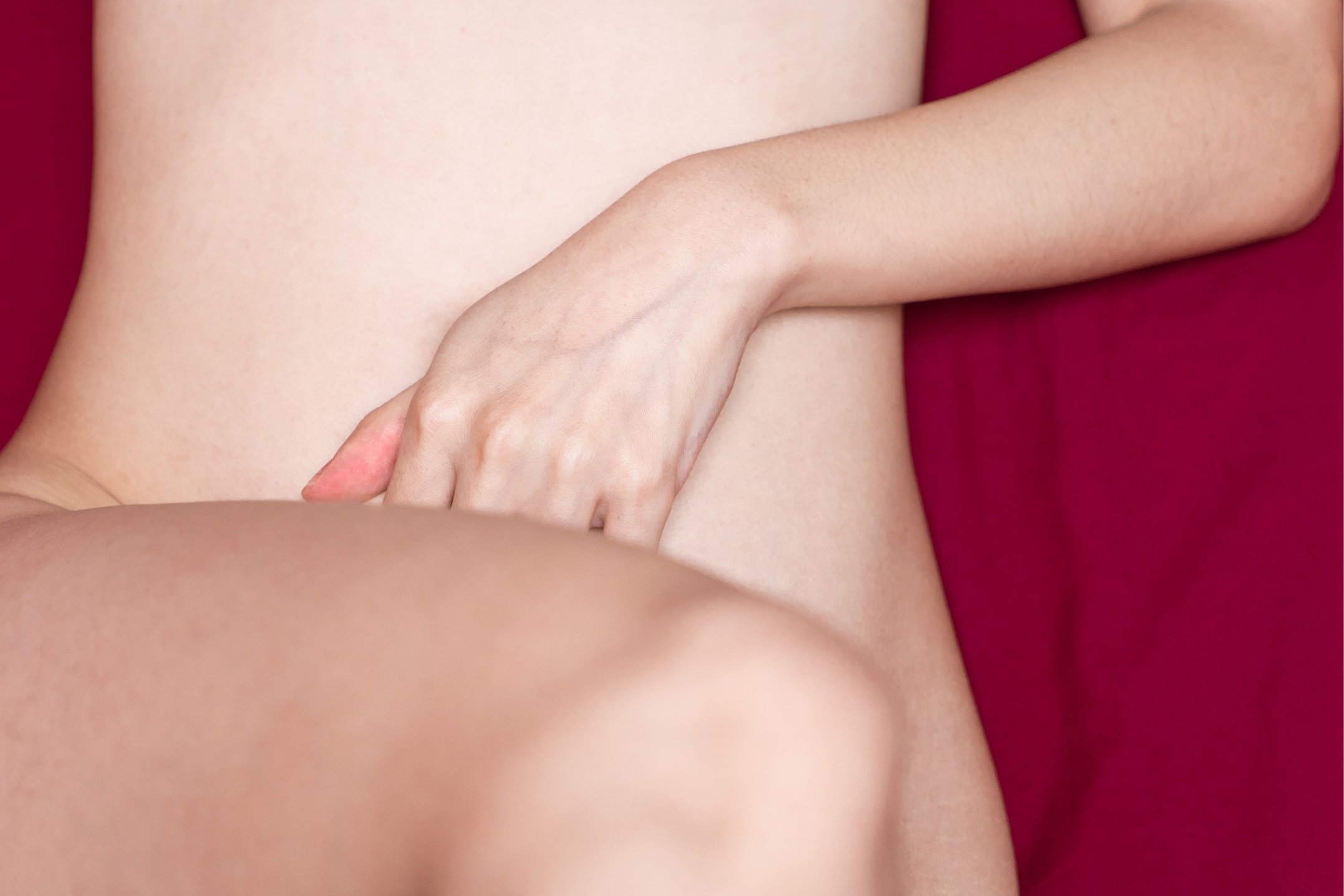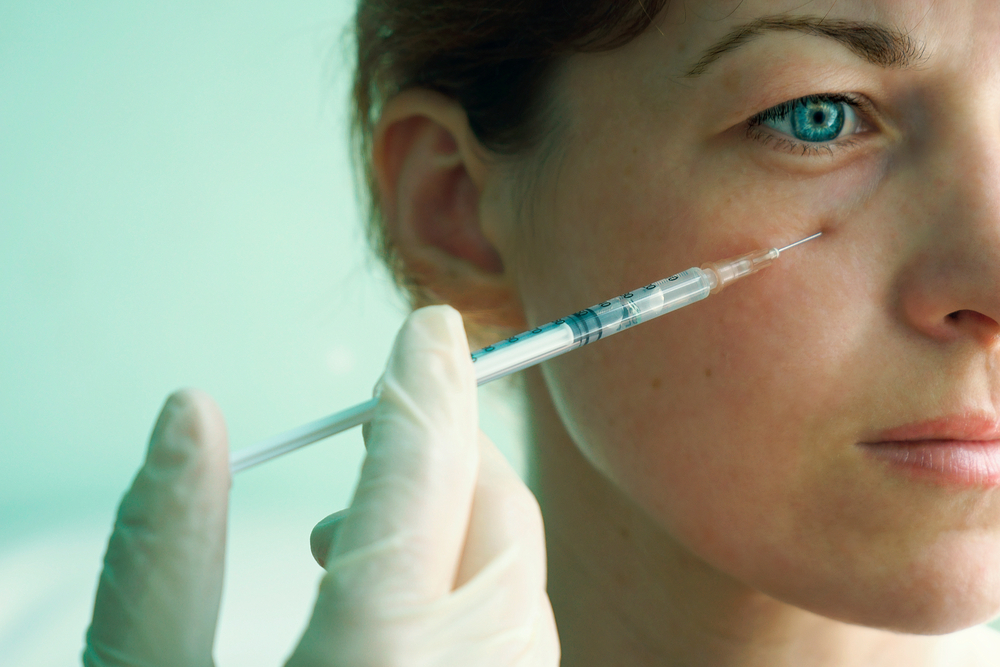- The VI (Vitality Institute) Peel, from VI Aesthetics, is reported to be less painful than traditional chemical peels.
- Unlike other well-known chemical peels that contain glycolic acid, it’s made of a combination of other alpha and beta hydroxy acids.
- Although VI Peels are recommended for a wide range of skin types and aesthetic concerns, they aren’t right for everyone.
VI Peels’s combination of ingredients purportedly acts deeper below the surface of the skin than other popular chemical peel brands, leading to more dramatic and long-lasting results.
Here’s what you need to know about this popular medical-grade skin treatment.
What are VI Peels good for?
Much like other chemical peels, VI Peels can be used for specific skin conditions or general rejuvenation.
They’re recommended by VI Aesthetics for the following concerns:
- Acne and acne scarring
- Melasma
- Sun spots
- Hyperpigmentation
- Rosacea
- Fine lines and wrinkles
- Large pores
- Other forms of mild scarring or blemishes
In short, the VI Peel promises to make skin firmer and clearer while also giving it a smoother and younger appearance.
» Learn more about different types of chemical peels – their side effects, cost, and aftercare instructions
What is in a VI Peel?
The VI Peel ingredients listed below can also be found in many store-bought chemical peels, where they essentially serve the same functions.
Trichloroacetic acid
Trichloroacetic acid (TCA) reportedly removes fine lines. Some chemical peels, such as TCA peels, use this ingredient as their central feature. TCA peels are also used to address pigmentation and acne problems.
Although TCA peels are considered relatively light, their anti-aging and skin-smoothing properties are dampened by potential risks and side effects.
In 2013, the New York Times ran a piece warning people of the carcinogenic properties of TCA. More recently, a 2015 study looked at high doses of TCA in certain acne treatments and concluded that patients ran the risk of chemical burns.
Furthermore, TCA has been linked to color changes in the skin, although its depigmentation properties may also explain its effectiveness in the treatment of hyperpigmentation conditions, such as melasma.
Retinoic acid
Although this acid comes from vitamin A (retinol), you won’t find it in your favorite fruits and veggies. The human digestive system metabolizes the vitamin A in foods and converts it to retinoic acid. In other words, spreading mashed sweet potatoes on your face won’t yield the same effect as a peel that contains retinoic acid.
Retinoic acid is credited with fighting wrinkles. In fact, retinoids in general (of which retinoic acid is one) are said to not only smooth out the skin, but also promote skin elasticity and firmness.
Although retinoic acid doesn’t seem to raise the same concerns as TCA, it should still be used with caution. Retinoids can lead to side effects that include itching, burning, swelling, dermatitis, and changes in pigment.
Salicylic acid
This acid acts as an exfoliant and anti-inflammatory agent, making it an ideal tool for combating acne. In fact, it’s a popular ingredient in many acne treatments.
Salicylic acid works by increasing moisture in the skin, helping to unclog pores, and dissolving the keratin between skin cells, making it easier for them to shed. As with the other acids on this list, improper use of salicylic acid can irritate or dry out your skin.
Phenol
Phenol is often used in stronger chemical peels to fight deep-set wrinkles. In fact, phenol chemical peels are considered to be the most aggressive on the market, and produce the most dramatic results.
Since phenol peels are especially harsh, they are generally not recommended for those with sensitive skin. Phenol is also said to cause permanent sun sensitivity and skin depigmentation.
Don’t let this scare you away. Remember that the VI Peel is supposed to be less painful and require less downtime than other peels. Although it’s unclear exactly how much phenol is in the VI Peel, it’s likely not as much as in a full-blown phenol peel, so the risk of related side effects is lower.
Ascorbic acid
Vitamin C — also known as ascorbic acid — does wonders for the skin by stimulating collagen growth, which in turn helps fight wrinkles and hyperpigmentation. Vitamin C is also an antioxidant and helps keep skin healthy by eliminating free radicals.
Recent studies comparing the benefits of topical natural vitamin C and synthetic ascorbic acid have concluded that the topical application of ascorbic acid may be more effective, as it is more likely to get past the skin’s surface barrier.
Minerals
In addition to the acids mentioned above, VI Aesthetics boasts a proprietary mineral blend, the contents of which are kept under wraps. It’s possible that this blend contributes to healthier skin, but the truly active anti-aging ingredients are the ones listed above.
What can I expect from my VI Peel?
Here’s how a VI Peel is performed, and the results you can expect in the following days and months.
During application
Unlike harsher peels, no topical anesthetic or special preparation is required. After your skin has been thoroughly cleansed, the solution is evenly applied to the treatment area using gauze. This is usually the face, but VI Peels have been used for the neck and chest as well. Some clinics will even treat other parts of the body, including the hands, elbows, legs, and back.
After application
Your appointment should last roughly 20-45 minutes, including the time it takes for the solution to dry. You’ll then be sent home with instructions to wash the solution off your face after four hours. It shouldn’t be apparent that you’ve just had a chemical peel — you’ll be able to return to your normal activities immediately after. You should, however, avoid heavy exercise over the next 24 hours.
You’ll most probably be instructed to use some at-home VI aftercare products to help with the peel. Depending on your provider, this post-peel regimen may include one or several of the following:
- VI Peel cleanser packets
- VI Peel retinoic acid wipes to quicken the peeling process
- VI Peel post-peel anti-itch cream (hydrocortisone 0.1%)
- VI Peel 50 SPF sunscreen
As the peel progresses, you’ll want to protect your fresh skin from the sun by staying inside or using doctor-approved sunscreens. Special serums or creams may also be recommended if your peel is targeting a specific concern, such as acne.
Make the best use of VI peels with these products.
After undergoing VI Peel treatment, you may use some of the skincare products for aftercare and maintenance.
Vi Derm Beauty, Sunscreen SPF 50
Vi Derm SPF 50 sunscreen lotion is light and creamy, blends into your skin smooth, and protects against harmful radiations. It soothes skin, reduces inflammation, and helps reverse pre-existing sun damage on your skin. It is highly recommended for dry skin types.
QRxLabs Chemical Peel Neutralizer
QRxLabs Chemical Peel Neutralizer balances your skin’s pH level following any acid-based facial peels. Chamomile and Green Tea extracts help calm skin burning and tingling and reduces inflammation and irritation. It is a safe and effective chemical peel neutralizer.
Paula’s Choice – Exfoliate
Skin perfecting 2% BHA liquid exfoliant for all skin types. Unclogs and shrinks enlarged pores, exfoliates dead skin cells, smoothens wrinkles and fine lines, and brightens and evens skin tone. You may uncover healthy, radiant skin.
Day and night cream nourishes and renews your skin by resurfacing for fresh, clear, glowing skin. Hydrates and evens skin tone. Formulated with skin-friendly ingredients to address dark spots, blemishes, sun damage, acne scars, and hyperpigmentation. Ideal for all skin colors, textures, and types. For best results, use it with sunscreen.
Masque BAR Gold Foil Facial Peel Off Mask (6 Packs)
A metallic peel-off mask clarifies, moisturizes, and smoothens the skin – infused with raspberry fruit extract, grapefruit extract, and Macadamia Ternifolia seed oil. Instant skin detoxification improves skin complexion, makes pores look smaller, and leaves skin looking more bright and glowing – best suited for oily skin types.
Peeling
Your skin will begin to peel and flake two or three days after the treatment, and continue for up to a week. Mild to moderate flaking generally appears around the mouth, but it can get more intense — almost like Elmer’s Glue dried on your hands.
You likely won’t see results immediately after you’re done peeling. It could take anywhere from four to six weeks, and multiple peels might be required to produce more substantial changes.
The manufacturers and many skin experts who administer the peel tout the painless benefits and the mild, easily-to-hide nature of the peeling, but it’s worth noting that not every patient’s experience lives up to these promises.
Some patients have reported mild to moderate pain during and shortly after the peel. Others have also felt the need to stay in or take time off, as the peeling was more significant than they expected. The itchy, dry, and “tight” feeling that’s common in the first 48 hours typically subsides drastically after the peeling process begins.
Before and After Photos
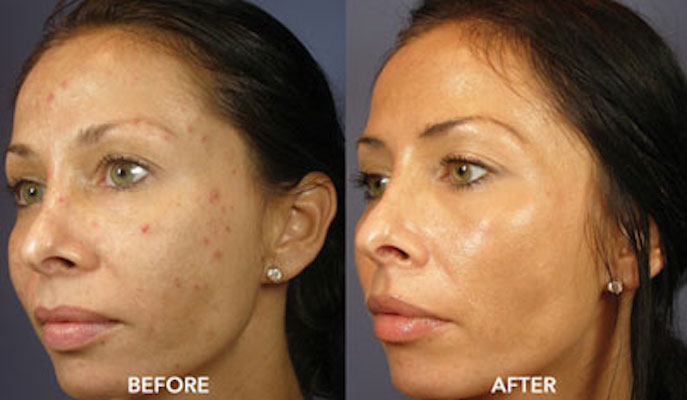
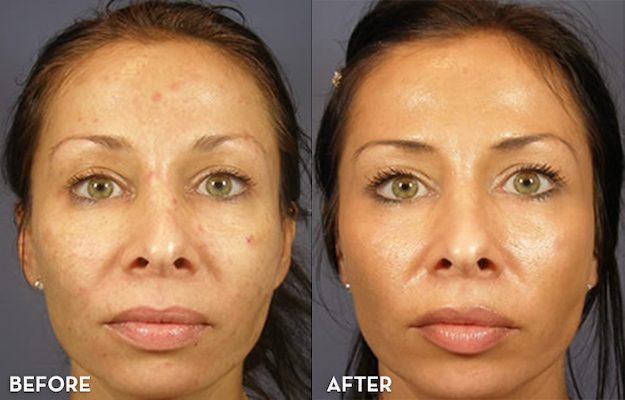


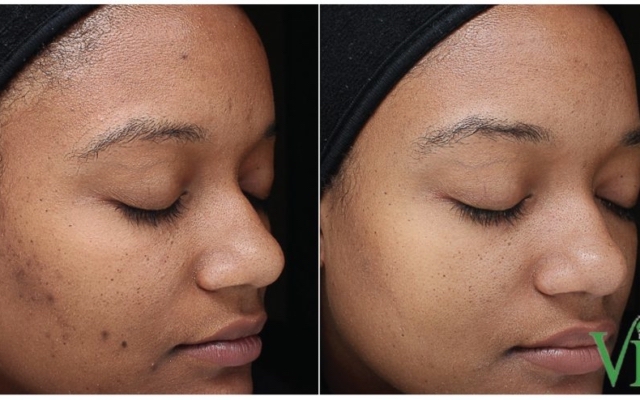
How often should I get a VI Peel?
For the best results, you’ll want more than one peel. The manufacturer recommends working with the clinic of your choice to devise an individualized treatment plan.
Some clinics recommend a rapid treatment schedule, followed by maintenance treatments. For example, they might suggest three to six treatments, two to three weeks apart, followed by maintenance treatments two to four times annually. Others aren’t quite as aggressive.
The manufacturer notes that it’s safe to have VI Peels four to six weeks apart.
What are the side effects from a VI Peel?
VI Peels are very safe and effective when done responsibly. However, the common claim that VI Peels cause no side effects isn’t accurate.
Here are some of the potential side effects associated with these treatments.
- Redness: Minor redness or blushing may occur just after the treatment and last for a day.
- Temporary discoloration: The peeling process can come with some redness or brownish tones, which will fade with time.
- Hyperpigmentation: There is some risk of hyperpigmentation, especially for people with darker skin tones. Hypopigmentation, where the skin loses pigment, is also possible, but rarer.
- Burns: Burns are rare but possible. This side effect is more likely if you have sensitive skin.
- Ulcerations: These sores on the skin are also rare and most likely to occur in individuals with sensitive skin.
- Swelling: Skin can become inflamed when it is irritated. If your skin is sensitive or you attempt to manually peel it, you run the risk of swelling. Any associated swelling should go down as your skin heals.
- Bruising: Along with swelling can come bruising. The new skin underneath can appear bruised or off-color.
- Infection: If you attempt to peel the skin prematurely, you run the risk of damaging it and inviting infection. Burns can also lead to secondary infection.
- Scarring: Any damage to the skin, such as burns, infection, and ulcerations, can potentially lead to scarring.
Follow your dermatologist’s directions regarding how often you get treated, how long you should leave the solution on, and what products you should use in conjunction with the VI Peel. Protect your new skin from the sun and do not manually peel your skin.
If you adhere to these guidelines, you should be able to avoid most or all of these side effects.
Who is a good candidate for the VI Peel?
The VI Peel is advertised as being a safe and effective peel for all skin types and tones. Even with the presence of harsh chemicals, like phenol, the VI Peel is considered safe for darker-skinned individuals, mainly because it doesn’t burn off the top layer of skin.
However, there are times when you might want to consider another option or skip on a chemical peel altogether. Speak to your dermatologist before undergoing a VI Peel if any of the following apply to you.
- Keloid scars: Chemical peels can make keloid scarring worse.
- Warts: Chemical peels won’t remove warts but could damage them enough to lead to infection or scarring.
- Heart disease: In rare cases, phenol can damage the heart and lead to an irregular heartbeat.
- Accutane: Avoid a chemical peel if you’ve used Accutane in the previous year.
- Chemotherapy: Avoid a chemical peel if you’ve had recent chemotherapy because it can worsen side effects and increase the risk of complications.
- Herpes: Chemical peels in general make the face more susceptible to the spread of the herpes virus.
- Burns: Already sensitive skin shouldn’t be exposed to harsh chemicals.
Note that the VI peel is contraindicated in patients with known cardiac arrhythmia or a history of aspirin allergy.
How much does a VI Peel cost?
Depending on the provider, VI Peels can cost as little as $150 or as much as $600.
Can I do a VI Peel at home?
VI Peels might appear simple, but that’s only because trained professionals make them look that way. An experienced skincare provider will know how much of the peel to use and how to evenly apply it.
» Look for a board-certified dermatologist or plastic surgeon with experience doing VI Peels by connecting with our medical review team.





